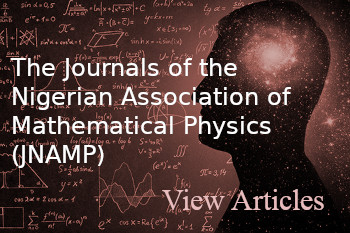On The Construction And Evaluation Of Nine-Treatment Incomplete-Block Designs Of Order Three From Some Quasi-Semi-Latin Squares
DOI:
https://doi.org/10.60787/tnamp.v21.507Keywords:
Block Structure, Canonical Efficiency, Pairwise Efficiency, Optimality criteria, Simple ContrastAbstract
The efficiency and optimality characterization of eight incomplete-block designs from some quasi-semi-Latin squares of order three were evaluated in this study. The quasi-semi-Latin squares were constructed from three distinct and unique quasi-semi-Latin squares. Incomplete-block designs were generated from the quasi-semi-Latin squares by considering different block structures: ‘short’ rows, ‘little’ columns and alternate treatment positions. The variance of the treatment contrasts, , , show that design is near-variance-balanced. Treatment pairs estimated with the same variance have the same efficiency while treatment pairs with minimum variances are the most efficient. The designs, , and , constructed using “little” columns as blocks have the same A-, D-, E- and MV-optimality criteria. The IBDs constructed using “little” columns as blocks led to about 8 % loss of information while the designs constructed using “short” rows as blocks led to about 39 % loss of information
Downloads
References
Bailey, R. A. (1988), Semi-Latin Squares, Journal of Statistical Planning and Inference, Vol. 18, 299-312.
Bailey, R.A. (1992), efficient semi-Latin Squares, Statistica Sinica, Vol. 2, 413 – 437.
Bailey, R.A. and Chigbu, P.E. (1997), Enumeration of semi-Latin squares, Discrete Mathematics, Vol. 167/168, pp. 73 – 84.
Chigbu, P.E. (1999), The Block Structure and Isomorphism of semi-Latin Squares and Related Designs, Bulletin of the Institute of Combinatorics and its Applications, Vol. 25, 53 – 65.
Chigbu, P.E. (2012), Design of Experiments (DOE): Recent Advances and Development, Journal of Nigerian Association of Mathematical Physics, Vol. 22, 233 – 240.
Chigbu, P.E. and Ukaegbu, E.C. (2019), The Efficiency and Optimality Characterization of Certain Six-Treatment Incomplete-Block Designs Emanating from some Quasi-semi-Latin Square, Communications in Statistics-Simulation
and Computation, Vol. 48(5), 1406 – 1428.
Hedayat, A.S., Stufken, J. and Zhang, W.G. (1995), Contingently and Virtually Balanced Incomplete Block Designs and their Efficiencies under Various Optimality Criteria, Statistica Sinica, Vol. 5 (2), 575 – 591.
Hinkelmann, k. and Kempthorne, O. (2005), Design and Analysis of Experiments, Vol. 2, John Wiley and Sons Inc. Hoboken, New Jersey.
John, J.A. (1987), Cyclic Designs, Springer-Science+Business Media, B.V.
John, J.A. and Williams, E.R. (1995), Cyclic and Computer Generated Designs, Springer-Science+Business Media, B.V.
Montgomery, D.C. (2013), Design and Analysis of Experiments, 8th Edition, John Wiley and Sons, Inc., N.Y.
Morgan, J.P. (2015) in Handbook of Design and Analysis of Experiments by Dean, A; Morris, M., Stufken, J. and Bingham, D., Eds, CRC Press/Chapman Hall, Boca Raton.
Bose,R.C.(1939) On the Construction of Balanced Incomplete Block Designs, Anal of Eugenics,vol.,Issue4,p 353-399,Wiley.
Addelman,S. and Bush,S.(1964).A Procedure for Constructing Incomplete Block Designs, Technometrics,Vol.6,No4,pp 389-403,Taylor and Francis.
Agrqwel,H.L and Prasad ,J.(1982).Some Methods of Construction of Balanced Incomplete Block Designs and Nested Rows and Columns,Biometrika,69,481-483.
Yasmin,F.,Ahmed,R.,Akhtar.(2015),Construction of Balanced Incomplete Block Designs Using Cyclic Shifts, Communications in Statistics, Simulation and Computations,44(2),525-532,Taylor and Francis.
Downloads
Published
Issue
Section
License
Copyright (c) 2025 The Transactions of the Nigerian Association of Mathematical Physics

This work is licensed under a Creative Commons Attribution-NonCommercial 4.0 International License.




